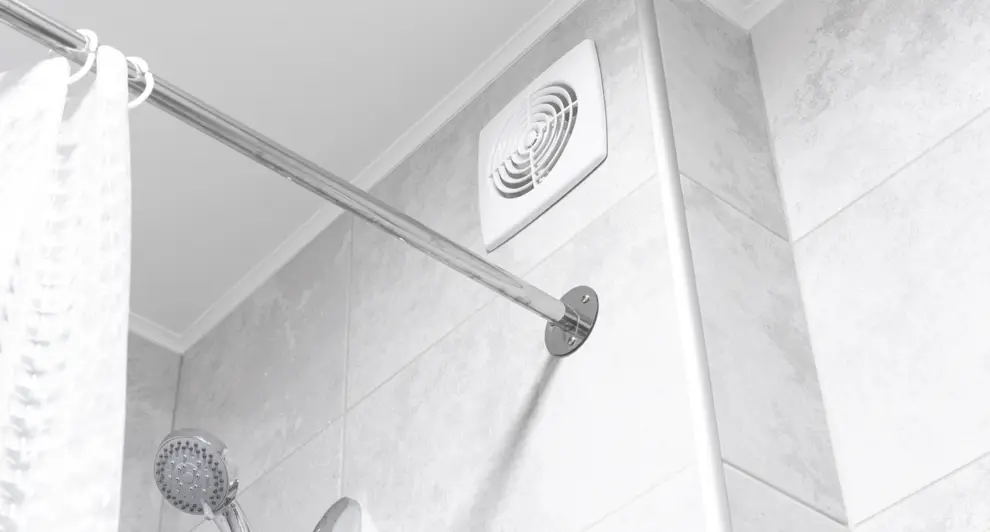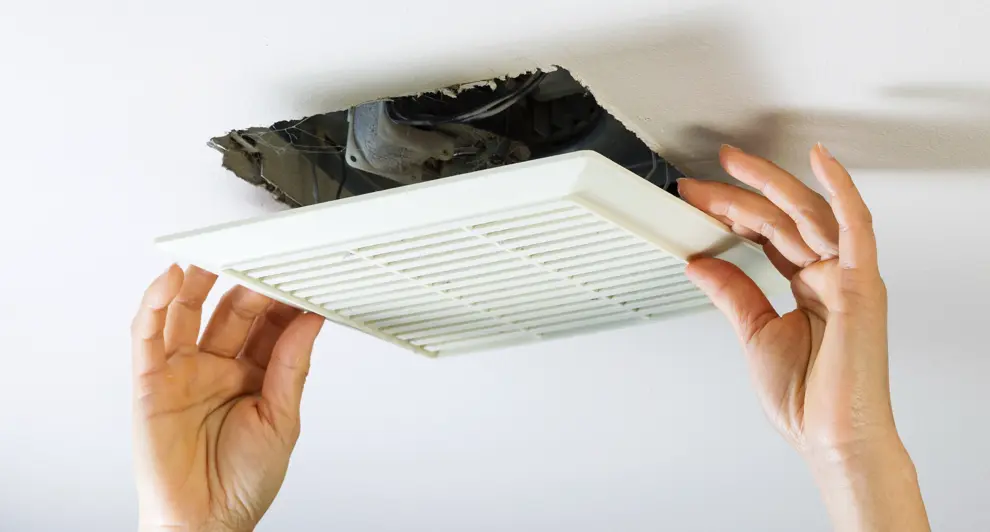
Mr. Electric explains that while bathroom exhaust fans aren’t always required, they are highly recommended for moisture and odor control.
|
When it comes to bathroom ventilation, many homeowners may not fully understand the importance of the role an exhaust fan plays. This role is especially critical in homes that don’t have windows in their bathrooms or rely on small, inefficient exhaust fans to get the job done. Let’s back up for a second and get a better understanding. What is the fan in the bathroom for? And does a bathroom need an exhaust fan? The short answer? The bathroom exhaust fan plays a crucial role in maintaining a healthy and comfortable environment by controlling moisture, eliminating unpleasant odors, and preventing structural damage. In this article, we'll explore why a bathroom exhaust fan is essential and how it helps improve both the air quality and the longevity of your bathroom.
Wait a minute! Does my bathroom need a fan?
Despite this archaic loophole and the time-honored tradition of relying on a bathroom window (which – let’s face it – typically stays closed 90% of the time) for ventilation, and though you may technically be up to code with those three square feet of glass and screen, it’s just not enough.
While bathroom exhaust fan code requirements have been around for a long time, many homeowners still don’t understand just how crucial this fixture is to bathroom health and comfort. Although building codes allow for natural ventilation, such as a window at least three square feet in size, a bathroom exhaust fan is generally a much more effective and reliable option for ventilation. A bathroom window likely stays shut most of the time, especially during extreme weather, and isn't always enough to properly manage moisture levels.
What Is the Exhaust Fan in the Bathroom For?
A bathroom exhaust fan serves several essential functions in a well-ventilated bathroom. These include:
- Odor control
- Humidity control
- Mold and mildew prevention
- Preservation of paint and building materials

Signs That Your Bathroom Needs Better Ventilation
The key to effective bathroom ventilation is ensuring that the exhaust fan vents air outside your home—not just into the attic or crawlspace, where moisture can accumulate and cause further problems.
Proper ventilation is crucial for maintaining a healthy bathroom environment and preventing moisture-related issues that can lead to mold, mildew, and damage to your home. If your bathroom lacks an exhaust fan or has insufficient ventilation, you may start noticing certain problems. Key signs that your bathroom needs more ventilation aren’t limited to:
- Excessive humidity: Foggy mirrors or windows after a shower indicate trapped moisture that’s not being expelled.
- Mold and mildew: Dark spots or growths on walls, ceilings, or grout are clear signs of excess moisture.
- Musty odors: Lingering musty smells suggest moisture buildup, which can lead to mold and unhealthy air quality.
- Peeling paint or warping wallpaper. Moisture trapped in walls can cause paint to peel or wallpaper to bubble.
- Water stains. Discoloration on walls or ceilings may result from condensation and inadequate ventilation.
- Higher energy costs. Without proper ventilation, your HVAC system may work harder to compensate for excess humidity, increasing energy bills.
- Foggy mirrors. Mirrors that stay fogged up long after a shower point to poor airflow and ventilation.
If you’re facing any of these issues, it may be time to install or upgrade your bathroom exhaust fan to improve air quality and prevent long-term damage.
What to Do If There Is No Exhaust Fan in Your Bathroom
If your bathroom lacks an exhaust fan, it’s essential to address the issue to prevent moisture buildup, mold growth, and other ventilation-related problems. Here’s what you can do:
- Open Windows After Showers. While not as effective as a fan, opening windows during and after showers can help ventilate excess moisture from the bathroom.
- Use a Dehumidifier. A portable dehumidifier can help remove moisture from the air in the absence of a fan.
- Ensure Proper Airflow. Keep the bathroom door slightly open when using it to allow air to circulate and moisture to escape.
These temporary measures are helpful, but ultimately, installing an exhaust fan is the best way to protect your bathroom and home from moisture-related damage.
Tips on Using an Exhaust Fan Effectively
Once you have an exhaust fan installed, it's important to use it correctly to ensure maximum efficiency and prevent issues like mold and moisture buildup. Here are some tips to get the most out of your bathroom exhaust fan:
- Turn the fan on before you shower: Start the fan before you turn on the water to help prevent excess humidity from accumulating in the bathroom.
- Keep the fan on for 20 minutes after a shower: Let the fan run after you’re done to ensure moisture has been fully removed from the room.
- Ensure proper venting: Check that the fan vents directly to the outside and not into the attic or crawlspace, where moisture can build up and cause problems.
- Clean the fan regularly: Dust and dirt can reduce the fan’s efficiency, so be sure to clean the vents and fans every few months.
- Avoid blocking the vent. Make sure that the fan’s ductwork isn’t obstructed, as this could reduce airflow and cause the fan to work inefficiently.
By following these simple tips, you can improve your bathroom’s air quality and keep moisture at bay. If you don't have a bathroom exhaust fan or are thinking about upgrading, it’s time to talk to an expert.
Mr. Electric® is here to help. Our service professionals are experienced in selecting and installing the right exhaust fan for your bathroom's unique needs. From proper ventilation and sizing to safe electrical installation, we ensure your bathroom exhaust fan works efficiently to improve air quality and prevent damage. Plus, with our Neighborly Done Right Promise®, we’ll ensure you’ll be happy with our work. Contact your local Mr. Electric service professional today for advice on choosing and installing your bathroom exhaust fan.
This article is intended for general guidance only and is not applicable to every situation. You are responsible for determining the proper course of action for your property and situation. Mr. Electric is not responsible for any damages that occur as a result of advice and/or guidance derived from its blog content.
Some Mr. Electric services vary by location. Contact your local Mr. Electric franchise for more information.

